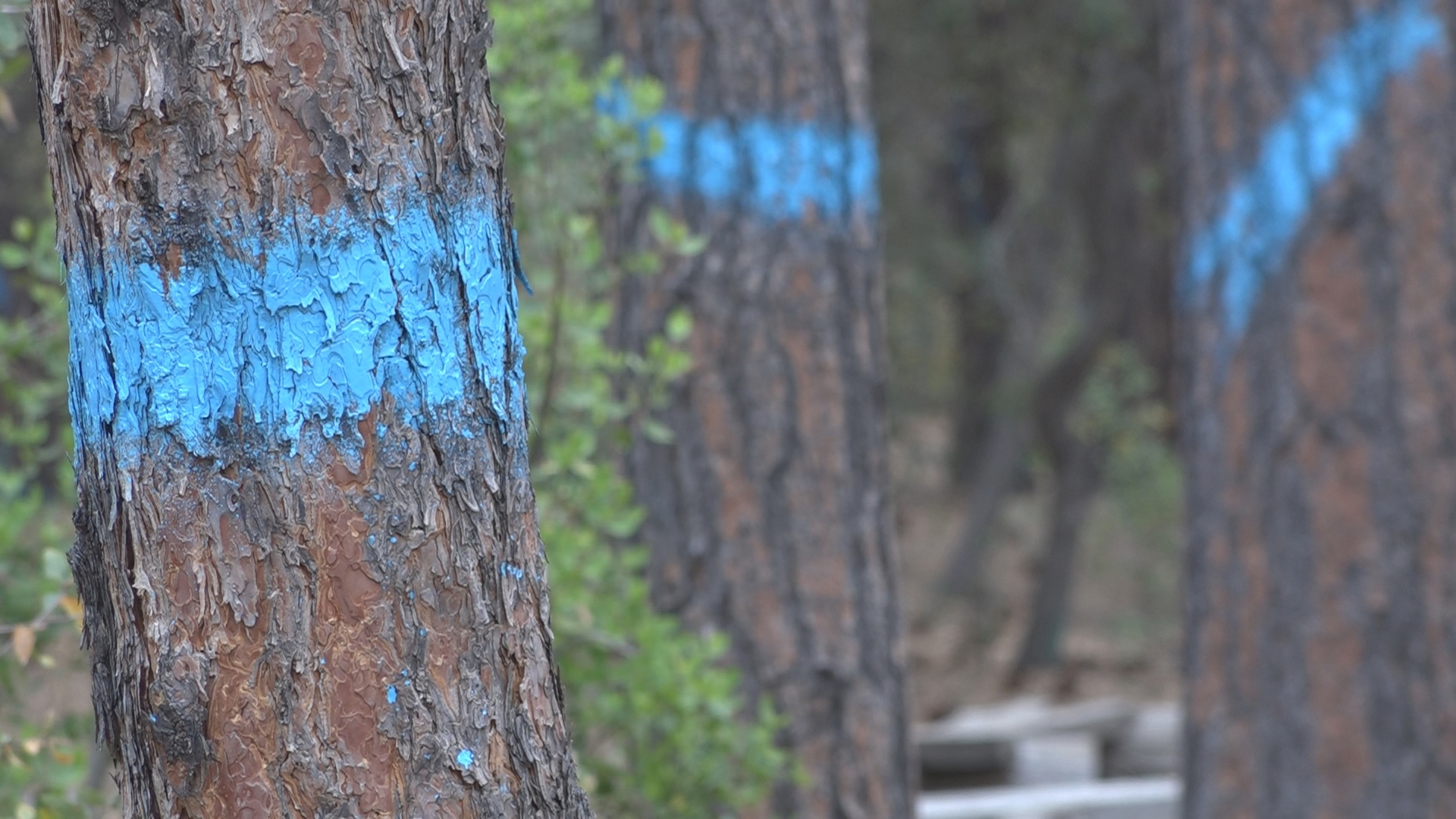PAYSON, Ariz. — At the Ponderosa Campground outside of Payson, pine trees tower over campsites. The pines provide shade, privacy and a place to tie hammocks. Ground squirrels are particularly fond of their pine cones.
People in Phoenix drive 100 miles to sleep under them. The Tonto National Forest campground is one of the closest places to the Valley where one can doze under tall pines.
Except that many of those pines may soon be gone.
The Forest Service has a plan to reduce the number of trees in the campground to what they call “pre-settlement conditions.” Taking the forest back to the 1800s when natural, cool-burning wildfires would naturally thin trees and other vegetation. It is both a policy decision and a forest health decision.
It’s just that … for a campground named for pine trees … it doesn’t leave a lot of trees.
Technically, many of these trees are not supposed to be here, said Jerry Nicholls, the timber contracting officer for the forest. During pre-settlement times, Nicholls said the Tonto National Forest had about 70 trees per acre. Uncontrolled wildfires naturally thinned the forest. Now, there are approximately 1,500 trees per acre.
The Little Nolan project, named after the son of a Forest Service employee, will return 111 acres to those pre-settlement conditions — including 41 acres at the Ponderosa campground.
Mesa resident James Reeves and his wife fell so in love with the campground they bought a travel trailer. During a recent trip this spring, they were stunned to find hundreds of Ponderosa pines marked with blue paint. Having a background in the timber industry, Reeves knew exactly what that color meant: Those trees are going away.
Blue paint means they’re marked for timber sale. And not just a few hundred trees; the plans calls for a majority of trees inside the 41-acre campground to be cut and sold, according to the Forest Service’s plan for fuel reduction.
All in the name of camper safety, forest health and wildfire resilience.
“Which to me is insane,” Reeves said. “It’s just plain not good timber practice.”
Reeves is quick to tell you he’s not a “tree hugger.” The retired civil engineer spent 19 years working for the Forest Service and was once head of engineering for the Tahoe National Forest. He understands that thinning forests can improve their health and prevent wildfires from expanding to thousands of acres.
He doesn’t understand why the Forest Service wants to thin a campground generations of families have enjoyed.
“It would just totally change the character of that campground,” Reeves said.
Even the Forest Service’s website boasts about how special these trees are.
“The Ponderosa pine trees make this a memorable campground” the Ponderosa campground page reads. “Larger Ponderosas release a vanilla scent into the air and have a relatively open understory, making the area perfect for camping.”
In some areas, it’s hard to find a tree that isn’t blue.
Steve Larson of Glendale is disappointed.
“I don’t know that I would want to come back here when the trees are gone,” Larson said. “Might as well close it down.”
Nicholls, the timber contracting officer with the Forest Service, said he empathizes with campers.
“I can see why people are concerned with the amount that is leaving but this is what was decided,” Nicholls said.
One main objective is to make the campground defensible to a catastrophic fire. Nicholls said camper safety is another priority.
He walked us around one campsite and pointed out hazard trees — those with structural defects that make them (or their branches) more likely to fall. These defects can be caused by humans, insects and age.
“We have a responsibility to keep our campers here — especially in a site like this — protected from falling trees and branches,” Nicholls said.
Once the trees are cut down and hauled away, their stumps will remain. Reeves said this will create thousands of new trip hazards which could result in serious injuries, especially amongst elderly campers. He worries the campground would become unusable.
Nicholls disagrees.
“Inherently, any time you are out in the woods there are trip hazards and things of that nature that we all need to be concerned about,” Nicholls said.
Reeves is also concerned about blow down. The remaining trees will be exposed to winds they were once insulated from. Nicholls said the odds of this occurring will increase after thinning, but typically during the winter months when the soil is saturated and the campground is closed.
The Forest Service has yet to sign a contract with a logging company, but Nicholls said the ink could be dry by the end of the year. If that happens, the trees could be cut and hauled next winter and spring, before campers return in April. The campground closes each November.
“It will look fairly drastic to some folks but it will grow, it will change and we might get some grasses in here,” Nicholls said.
Reeves said the timber sale needs to be stopped.
“It would take decades, generations to get any significant [growth] in there,” Reeves said.
UP TO SPEED

